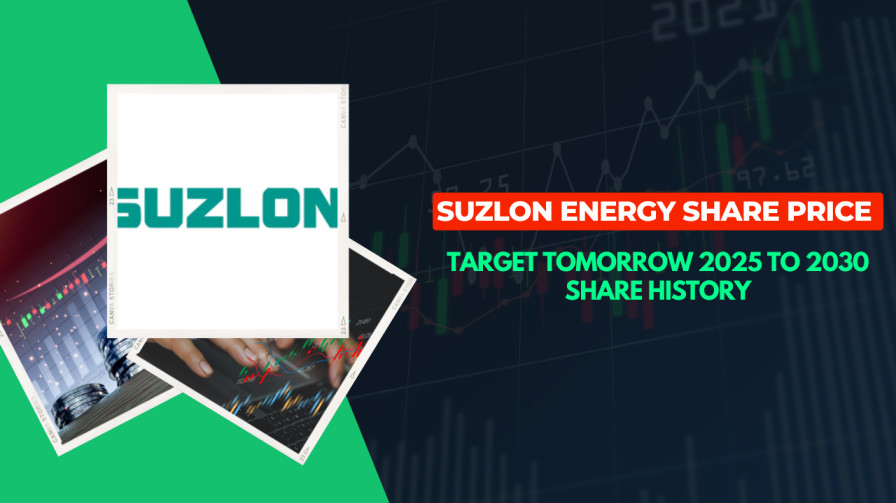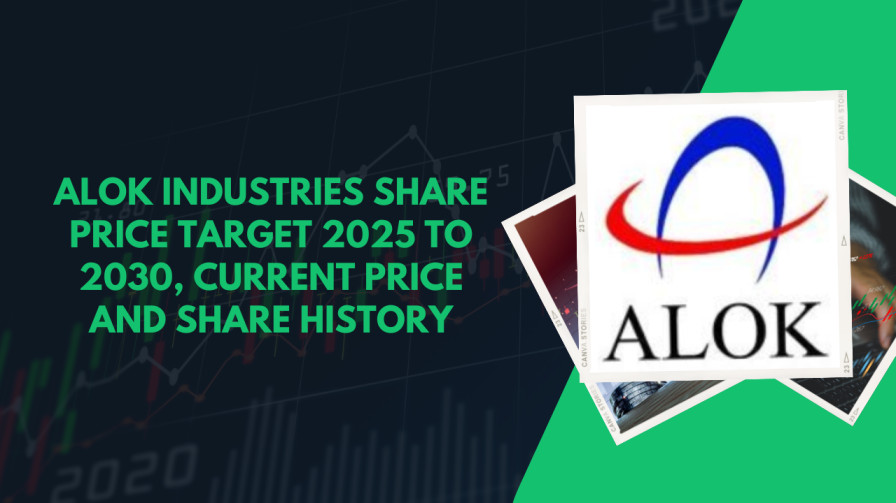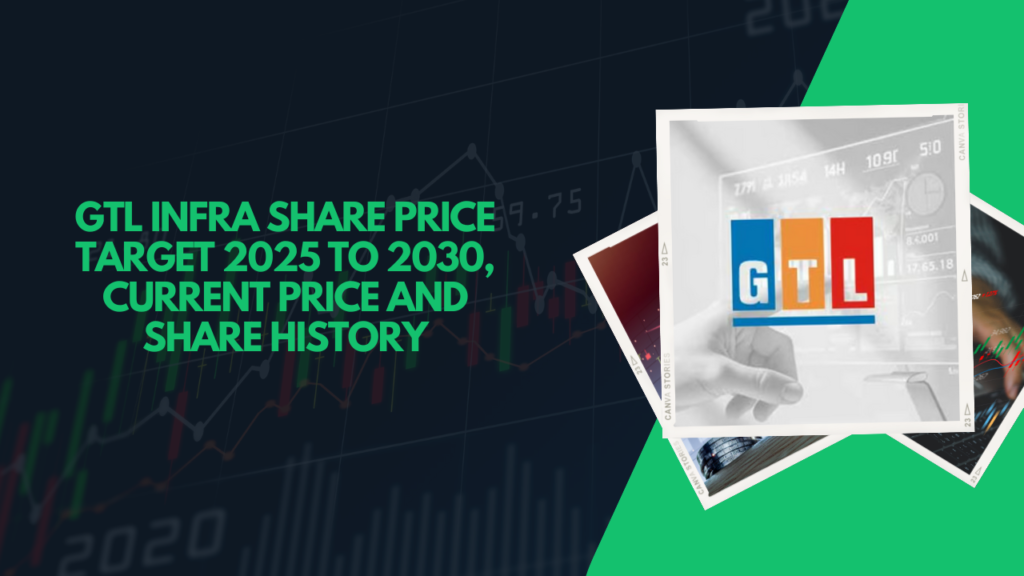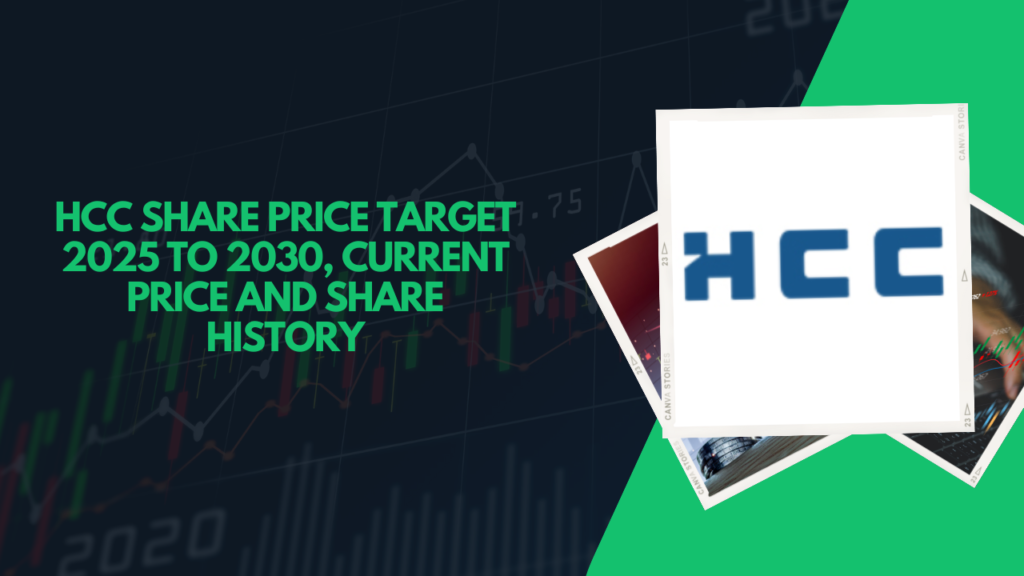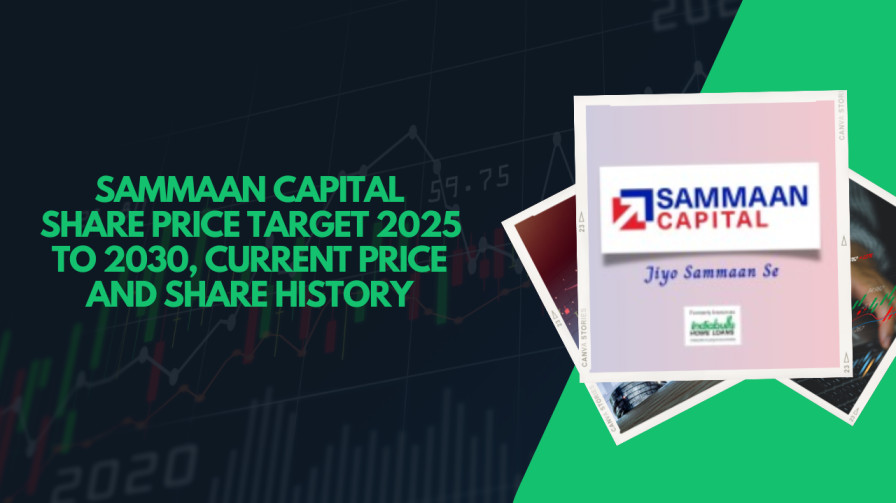This article provides an in-depth analysis of RVNL Share Price Target from 2025 to 2030, focusing on its current market performance, share history, financial trends, shareholding pattern, and competitive positioning.
Overview of RVNL
What is Rail Vikas Nigam Limited?
Rail Vikas Nigam Limited (RVNL) is a central Public Sector Undertaking under the Ministry of Railways, responsible for implementing railway projects and developing transport infrastructure across India.
Key Features of Rail Vikas Nigam Limited
- Market Role: Acts as the construction arm of the Ministry of Railways, playing a key role in railway infrastructure development across India.
- Revenue: Reported strong financial performance, with consistent growth in project execution and order book.
- Project Portfolio: Involved in key national projects including doubling, gauge conversion, electrification, and metro rail works.
- Stock Exchange Listings: Listed on BSE (542649) and NSE (RVNL), offering transparency and investment accessibility.
- Strategic Focus: Focused on timely project delivery, public-private partnerships, and expanding into urban infrastructure.
Information about Rail Vikas Nigam Limited
| Information | Details |
|---|---|
| Website | rvnl.org |
| Headquarters | New Delhi, India |
| Founded | 24 January 2003 |
| Founder | The Government of India |
| CEO | Pradeep Gaur |
| Number of Employees | 186 (2024) |
| Parent Organization | Ministry of Railways, Government of India |
| Subsidiaries | High Speed Rail Corporation of India Limited, Kutch Railway Company Limited |
| Stock Exchange Listings | BSE: 542649, NSE: RVNL |
Current Market Overview of RVNL Share Price
Rail Vikas Nigam Limited Share Fundamental Data
- Market Cap: ₹81,024 Cr.
- Current Price: ₹389
- High / Low: ₹647 / ₹295
- Book Value: ₹45.9
- Dividend Yield: 0.54%
- ROCE: 14.7%
- ROE: 14.0%
- Face Value: ₹10.0
- Stock P/E: 63.2
Market Position of Rail Vikas Nigam Limited Share as of June 2025
| Time Period | Returns of RVNL Share |
|---|---|
| 1 Day | 2.09% |
| 1 Week | -4.20% |
| 1 Month | -6.06% |
| 3 Months | 8.94% |
| 1 Year | 0.67% |
| 3 Years | 1232.99% |
| 5 Years | 1962.00% |
Rail Vikas Nigam Limited Share Price History from 2019 to 2025
| Year | RVNL Share Price | YOY Chg% |
|---|---|---|
| 2025 | ₹381.95 | -9.6% |
| 2024 | ₹422.70 | 132.8% |
| 2023 | ₹181.55 | 166.0% |
| 2022 | ₹68.25 | 96.4% |
| 2021 | ₹34.75 | 44.8% |
| 2020 | ₹24.00 | 4.6% |
| 2019 | ₹22.95 | – |
Rail Vikas Nigam Limited (RVNL) Share Price Target for 2025, 2026, 2027, 2028, 2029, 2030
RVNL Share Price Target for 2025
In 2025, RVNL’s share price is projected to reach up to ₹408, backed by a strong pipeline of railway infrastructure projects and efficient execution under the Ministry of Railways.
| Year | Minimum Target | Maximum Target |
|---|---|---|
| 2025 | ₹390 | ₹408 |
RVNL Share Price Target for 2026
For 2026, the target is expected to rise to ₹417, driven by growing investments in railway electrification, project doubling, and increasing public-private collaborations.
| Year | Minimum Target | Maximum Target |
|---|---|---|
| 2026 | ₹400 | ₹417 |
RVNL Share Price Target for 2027
By 2027, RVNL’s share is anticipated to trade between ₹395 and ₹409, reflecting stable performance and consistent order execution.
| Year | Minimum Target | Maximum Target |
|---|---|---|
| 2027 | ₹395 | ₹409 |
RVNL Share Price Target for 2028
In 2028, the share price is likely to increase to ₹429, supported by growth in urban transport projects and infrastructure modernization across the country.
| Year | Minimum Target | Maximum Target |
|---|---|---|
| 2028 | ₹410 | ₹429 |
RVNL Share Price Target for 2029
For 2029, RVNL’s share is projected to touch ₹439, driven by improved margins, project expansions, and sustained order inflows.
| Year | Minimum Target | Maximum Target |
|---|---|---|
| 2029 | ₹420 | ₹439 |
RVNL Share Price Target for 2030
By 2030, the share price is expected to reach ₹455, reflecting RVNL’s strategic role in India’s infrastructure development and future metro expansion initiatives.
| Year | Minimum Target | Maximum Target |
|---|---|---|
| 2030 | ₹435 | ₹455 |
Financial Health and Performance Analysis of RVNL (FY 2021 – FY 2025)
Total Revenue (FY 2021 – FY 2025)
| Year | Total Revenue (₹ Cr) | Total Revenue Growth (%) |
|---|---|---|
| FY 2025 | ₹20,922.79 | -9.33% |
| FY 2024 | ₹23,074.80 | 8.44% |
| FY 2023 | ₹21,278.04 | 5.43% |
| FY 2022 | ₹20,181.94 | 28.44% |
| FY 2021 | ₹15,713.08 | 6.34% |
Total Expenses (FY 2021 – FY 2025)
| Year | Total Expenses (₹ Cr) | Total Expenses Growth (%) |
|---|---|---|
| FY 2025 | ₹19,368.17 | -8.32% |
| FY 2024 | ₹21,125.83 | 7.57% |
| FY 2023 | ₹19,638.49 | 4.55% |
| FY 2022 | ₹18,783.29 | 28.87% |
| FY 2021 | ₹14,575.09 | 5.58% |
Profit After Tax (PAT) and EPS (FY 2021 – FY 2025)
| Year | PAT (₹ Cr) | PAT Growth (%) | Basic EPS (₹) |
|---|---|---|---|
| FY 2025 | ₹1,281.39 | -18.61% | 6.15 |
| FY 2024 | ₹1,574.30 | 10.82% | 7.55 |
| FY 2023 | ₹1,420.55 | 20.11% | 6.81 |
| FY 2022 | ₹1,182.69 | 28.22% | 5.67 |
| FY 2021 | ₹922.41 | 22.45% | 4.42 |
Profit Margins (FY 2021 – FY 2025)
| Year | Operating Profit Margin (%) | Net Profit Margin (%) |
|---|---|---|
| FY 2025 | 10.51% | 6.43% |
| FY 2024 | 11.50% | 7.19% |
| FY 2023 | 10.95% | 7.00% |
| FY 2022 | 10.12% | 6.10% |
| FY 2021 | 7.57% | 5.98% |
How to Buy RVNL Shares
- Choose a Broker: Select a trusted brokerage platform such as Zerodha, Upstox, Angel One, ICICI Direct, or HDFC Securities that provides access to RVNL shares.
- Open a Trading Account: Create a Demat and trading account with your chosen broker. Popular platforms include Zerodha’s Kite, Upstox Pro, and Angel One.
- Complete KYC: Complete the Know Your Customer (KYC) process by submitting required documents like PAN card, proof of identity, and address.
- Deposit Funds: Transfer sufficient funds into your trading account to proceed with buying RVNL shares.
- Search for the Company Shares: Look up Rail Vikas Nigam Limited by searching the company name or ticker symbol (RVNL) on your broker’s platform.
- Place an Order: Decide the number of shares to purchase and place either a market order (for instant purchase) or a limit order (at your preferred price).
- Confirm Purchase: Review all details and confirm the order to successfully complete your RVNL share purchase.
RVNL Share Price Target for the Next 5 Years
Rail Vikas Nigam Limited (RVNL) is projected to maintain stable growth driven by government-backed infrastructure development, electrification projects, and public-private partnerships. Below are the estimated share price targets for the next 5 years:
| Year | Minimum Target (₹) | Maximum Target (₹) |
|---|---|---|
| 2025 | ₹390 | ₹408 |
| 2026 | ₹400 | ₹417 |
| 2027 | ₹395 | ₹409 |
| 2028 | ₹410 | ₹429 |
| 2029 | ₹420 | ₹439 |
Shareholding Pattern of RVNL as on Mar 2025
Promoters:
- No. of Shares: 1,51,87,43,694
- Percentage: 72.84%
- % Change QoQ: 0.00%
Pledge:
- No. of Shares: 0
- Percentage: 0.00%
- % Change QoQ: 0.00%
FII (Foreign Institutional Investors):
- No. of Shares: 10,56,40,647
- Percentage: 5.06%
- % Change QoQ: -0.03%
DII (Domestic Institutional Investors):
- No. of Shares: 12,94,17,539
- Percentage: 6.21%
- % Change QoQ: +0.04%
MF (Mutual Funds):
- No. of Shares: 43,22,002
- Percentage: 0.21%
- % Change QoQ: +0.01%
Others:
- No. of Shares: 33,12,18,220
- Percentage: 15.89%
- % Change QoQ: -0.01%
Peer Competitors of RVNL in the Construction Sector
| Name | Share Price (₹) | Market Cap (₹ Cr) |
|---|---|---|
| Larsen & Toubro | 3660.65 | 503596.11 |
| Rail Vikas (RVNL) | 390.70 | 81408.45 |
| NBCC | 117.10 | 31683.53 |
| IRB Infra. Devl. | 48.65 | 29398.09 |
| KEC International | 898.00 | 23884.60 |
| Kalpataru Projects | 1163.00 | 19875.85 |
| Ircon International | 197.45 | 18518.97 |
Challenges and Risks of Investing in RVNL
- Economic and Budgetary Dependency: As a public sector enterprise under the Ministry of Railways, RVNL’s performance is closely tied to government budget allocations and infrastructure spending. Any cutbacks or delays can directly impact project execution and revenues.
- Project Execution Delays: Being involved in large-scale infrastructure projects, RVNL faces risks of execution delays due to land acquisition issues, regulatory approvals, or contractor inefficiencies.
- Limited Diversification: RVNL’s business is primarily focused on railway infrastructure. Lack of diversification may expose it to sector-specific risks, especially if rail investments slow down.
- Policy and Regulatory Risks: Changes in government policies, public-private partnership frameworks, or compliance requirements may affect project viability and margins.
RVNL Share Price: Key Factors Driving Growth
- Strong Government Backing: As a central PSU, RVNL benefits from consistent project flow, funding, and support from the Government of India, enhancing investor confidence.
- Strategic Role in Infrastructure Development: RVNL plays a critical role in key national initiatives such as railway electrification, doubling, and metro projects, positioning it for long-term growth.
- Improved Financial Performance: With rising profits, healthy order books, and increasing execution capacity, RVNL has shown consistent financial progress over recent years.
- Public-Private Partnerships (PPP): Expansion into PPP-based models offers RVNL the opportunity to scale operations and improve margins while reducing dependency on public funding.
(FAQs)
1. What does RVNL do?
RVNL is a public sector enterprise under the Ministry of Railways, responsible for implementing railway infrastructure projects such as new lines, doubling, electrification, metro projects, and station development.
2. Is RVNL a government company?
Yes, RVNL is a Central Public Sector Undertaking (CPSU), fully owned by the Government of India, with the majority shareholding held by the President of India.
3. Is RVNL a good investment?
RVNL has shown consistent financial growth and benefits from strong government backing. It operates in a critical infrastructure sector, which makes it attractive for long-term investors, although it carries risks related to project execution and policy changes.
4. How can I buy RVNL shares?
You can buy RVNL shares through any registered stockbroker in India like Zerodha, Upstox, ICICI Direct, or HDFC Securities by opening a Demat and trading account.
5. Does RVNL pay dividends?
Yes, RVNL has a history of paying dividends. However, dividend yield may vary each year based on the company’s performance and government policy.
6. What is the share price target of RVNL for 2025–2030?
The projected RVNL share price targets range from ₹390 in 2025 to ₹455 by 2030, depending on market conditions, project execution, and government spending on infrastructure.

